While traveling in Taiwan, I came across two Taiwanese kids crying over their English homework in a 7-Eleven and happily lent them my native English skills. I felt lonely and disconnected during my 6 months of traveling, but this tiny interaction helped me feel connected to humanity again. This led me to wonder:
How can we dive right into community engagement, especially as a newcomer?
As humans, we all have the innate wish to have purpose and a sense of belonging. Volunteering is one way to feel such a connection. Our research showed us that over 90 percent of Americans want to volunteer while only one out of four individuals actually do*. We wanted to find out what’s stopping people from volunteering and to ideate the possible solutions.
Our 5-person team conducted a 3-phase user research case study over the course of 10 weeks to understand how people typically find and participate in volunteering opportunities.
Phase 1: Contextual Inquiry Field Study
(10 participants, qualitative)
How do people currently find volunteering opportunities?
- This method allows us to understand the underlying structures and habits of users when they set out to find and join a volunteering opportunity.
- We asked participants to walk through all the steps they took to join, onboard, and participate in a volunteering opportunity.
- Analysis tool: User Flow detailing key behavioral patterns at each stage
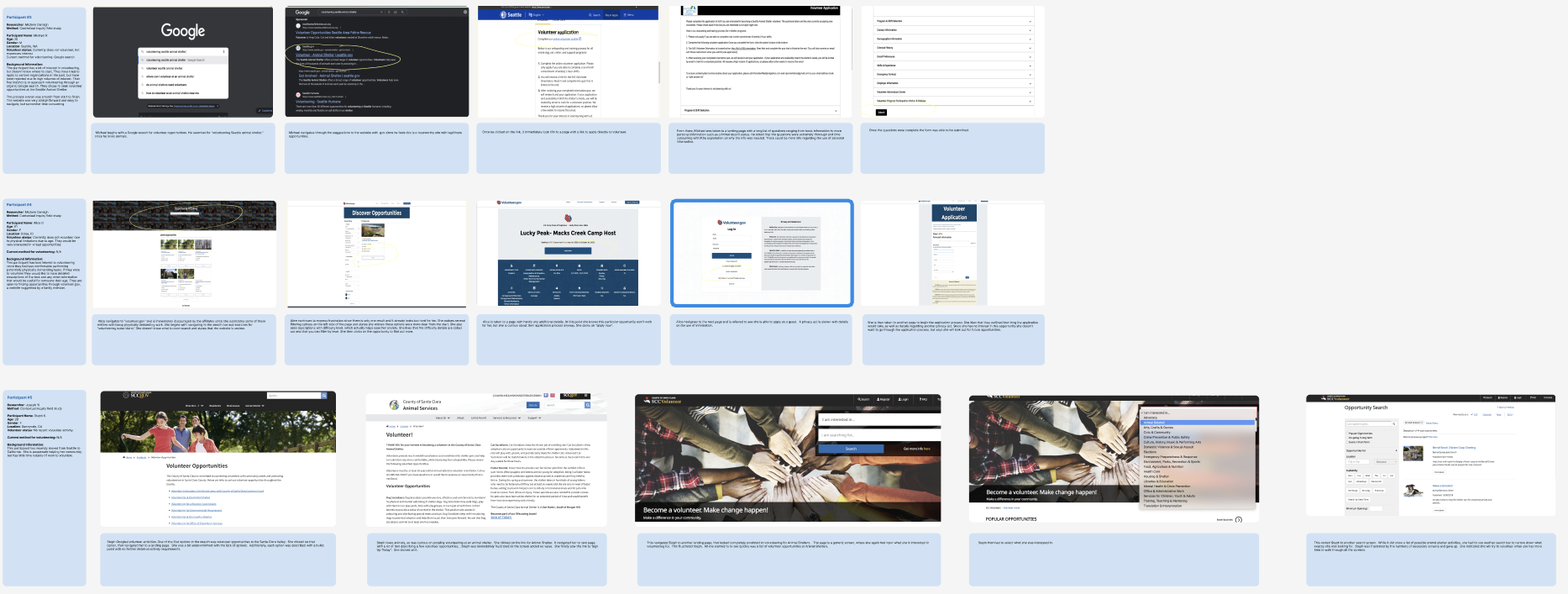
Phase 2: One on One Moderated Interview (8 participants, qualitative)
(8 participants, qualitative)
What are the barriers people face?
- Using behavioral insights uncovered from our field studies, interviews provide depth about user needs and motivation
- We asked particpants to recall a volunteering experience and what they valued from the experience
- Themes that emerge from interview data are used to craft the user survey
- Analysis tool: Affinity Diagram to uncover key themes from qualitative information
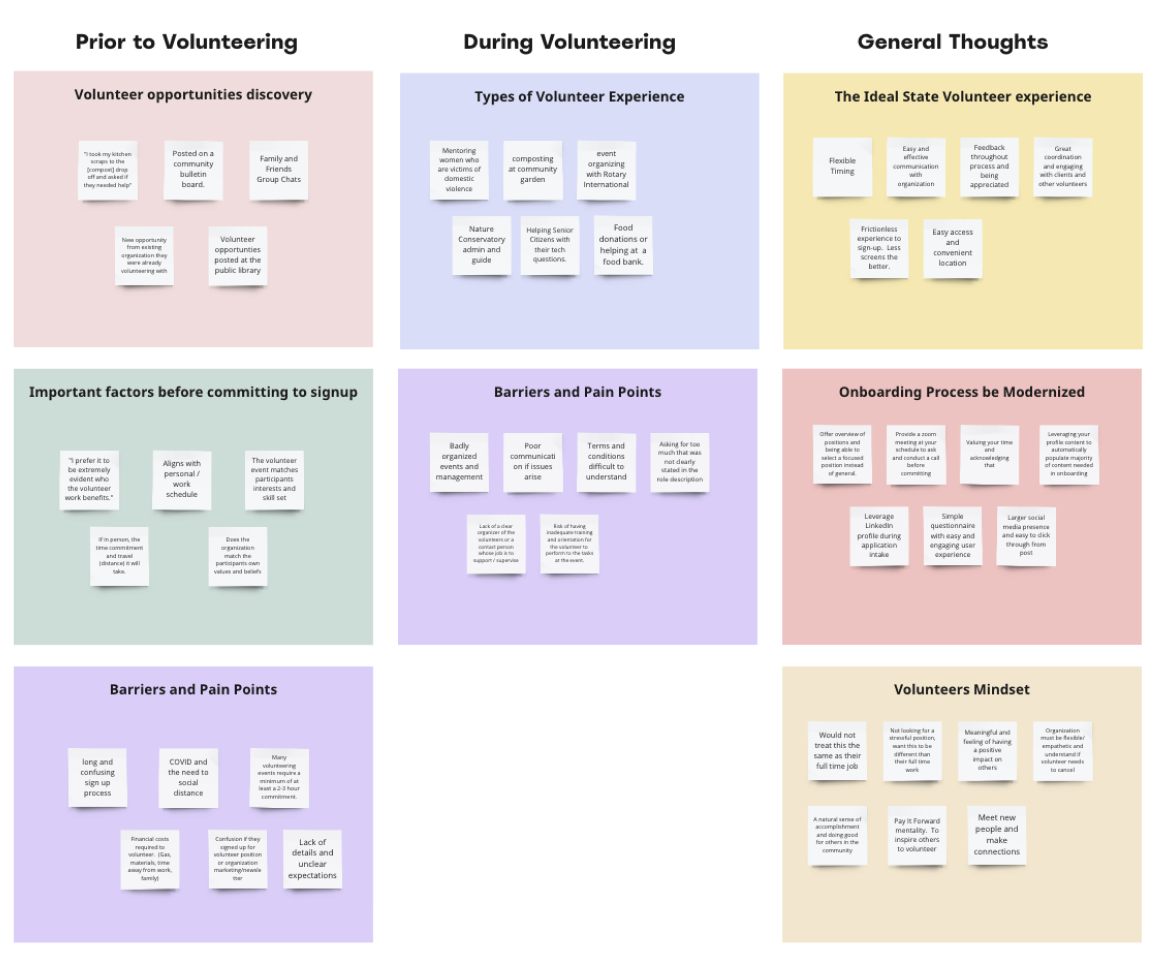
Phase 3: Targeted User Survey (75 participants, quantitative)
(75 participants, quantitative)
Can a centralized app with remote volunteering remove barriers?
- This stage focuses on specific variables uncovered from previous studies
- Our 20 question survey seeks to understand which product features resonate with users
- The quantitative insights from this stage objectively support our findings and decisions
- Analysis tool: Cross-Tabulation and Comparative Analysis
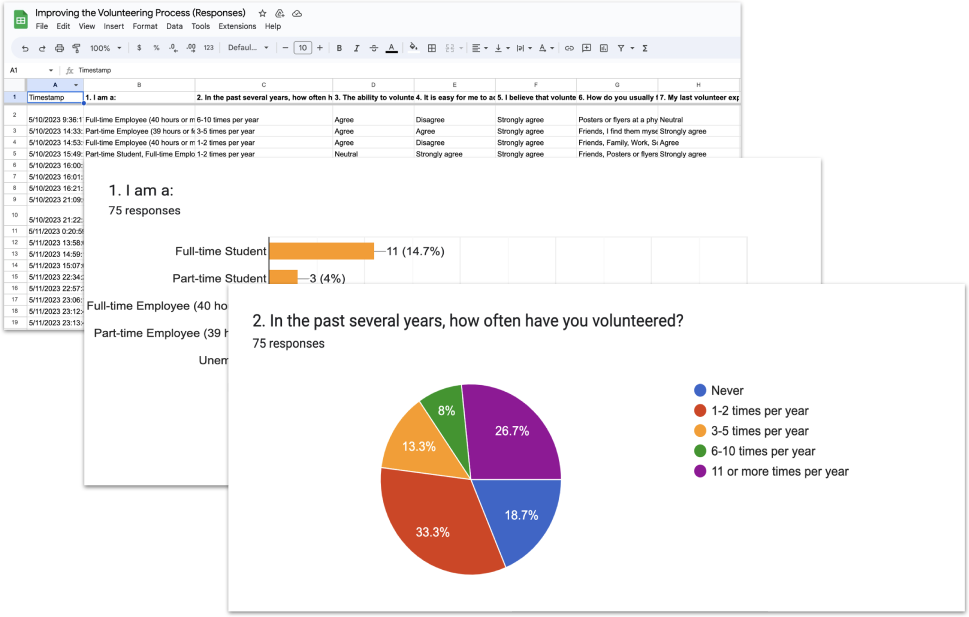
With the insights gathered from our research studies, we crafted personas around the most common physical and logistical barriers people seem to face.

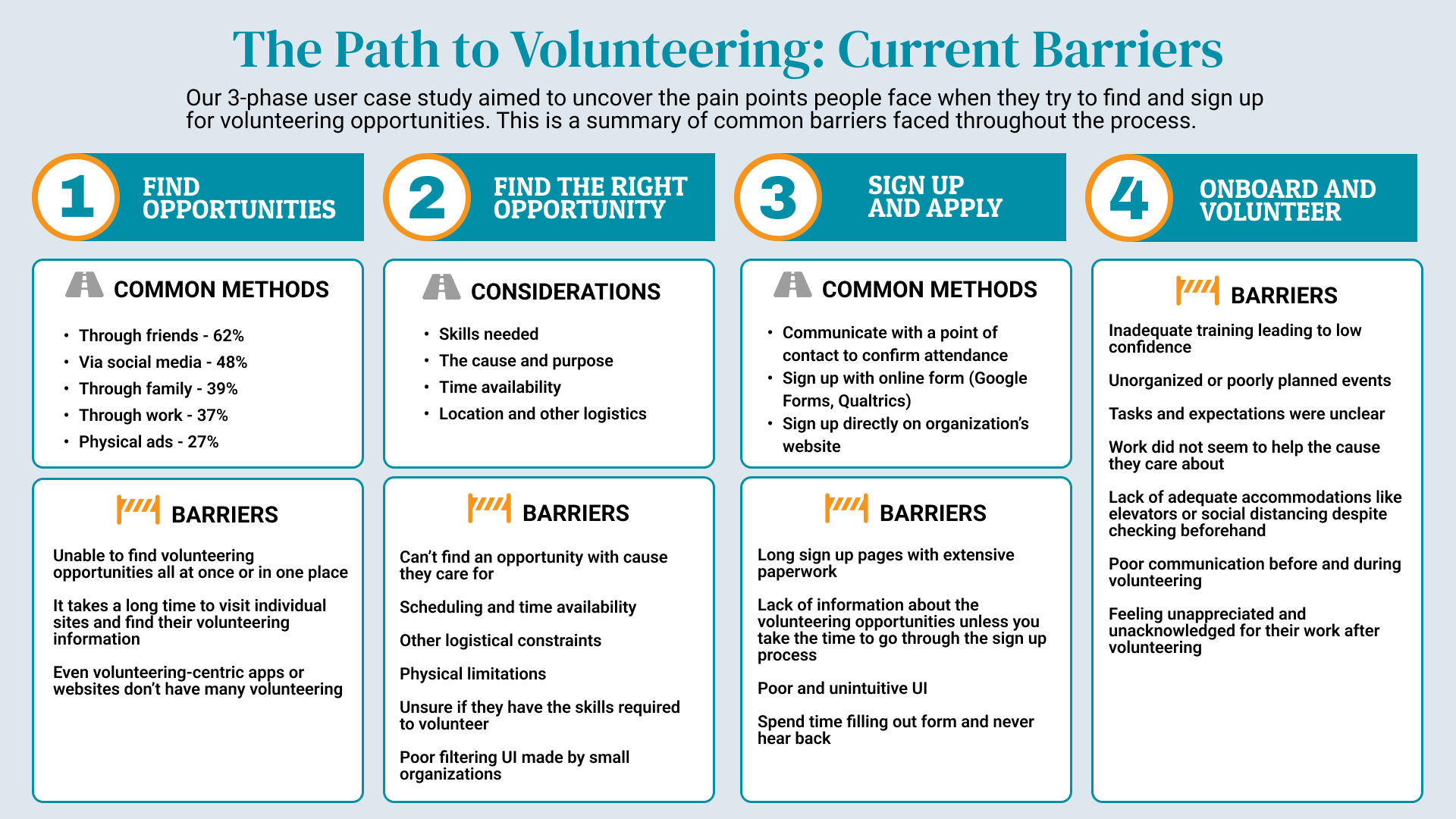
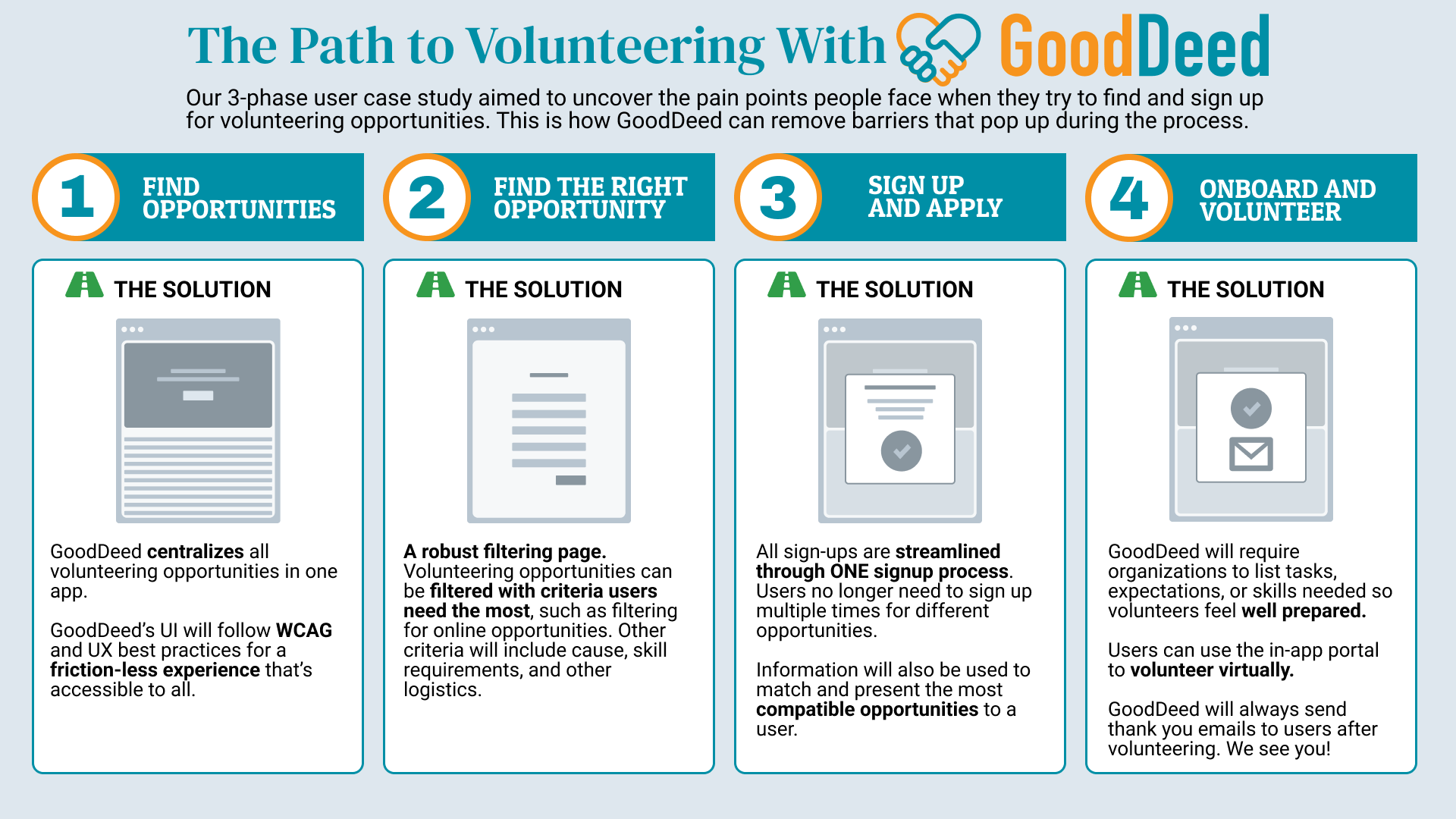
Our app idea has potential to meet needs in a way competitors are not achieving.
Users would benefit from a platfrom that centralizes a variety of volunteering opportunities with one sign up page.
Key features needed:
- In-app video collaboration tool for users to virtually volunteer (67% of survey respondents signaled interest)
- A robust filtering and search system for users to easily find the opportunities right for them
- An overall focus on accessibility and UX
- We can begin building the MVP with the key features mentioned in our findings
- Next, we suggest conducting a card sorting study to better understand the mental models used, thus refining filtering criteria
- Once the MVP is built, rigorous usability testing is needed to ensure the app is accessible and easy to use
- Future features should account for improving communication between organizers and volunteers for streamlined onboarding and training